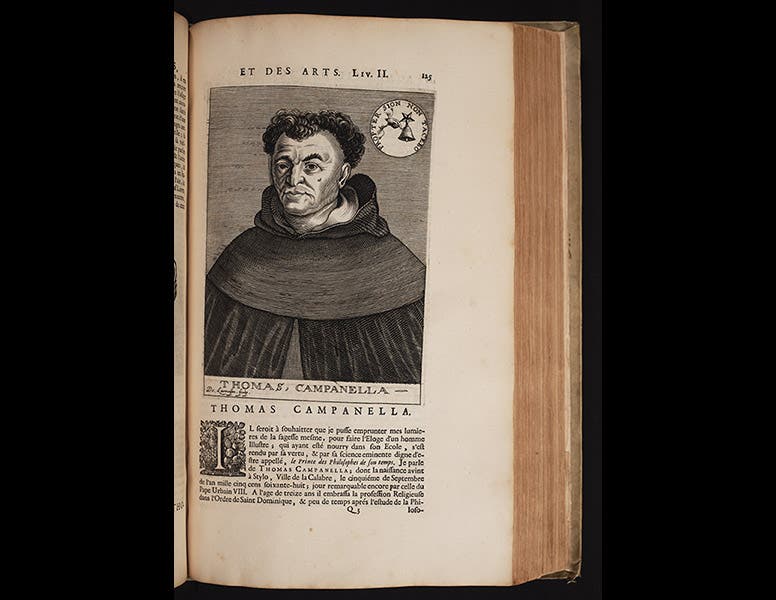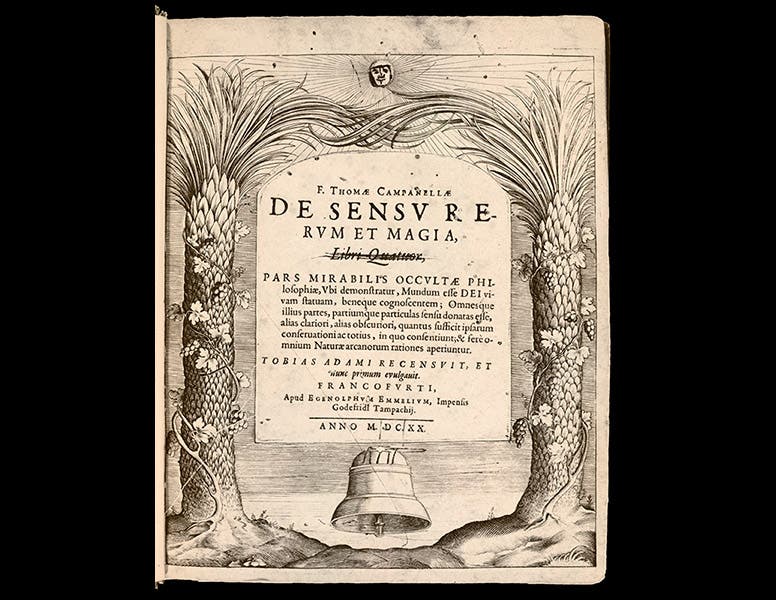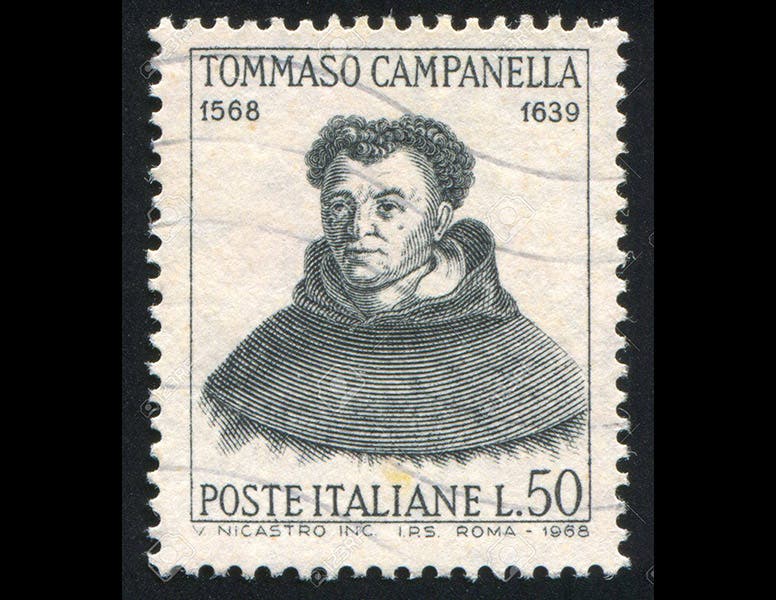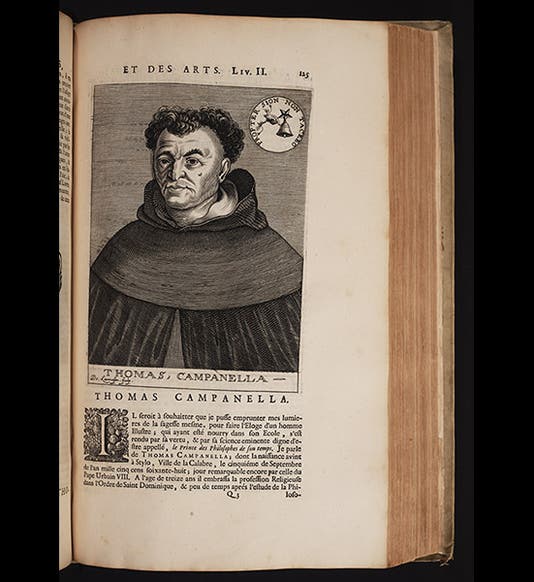Scientist of the Day - Tommaso Campanella





Tommaso Campanella, an Italian Dominican priest and philosopher, was born Sep. 5, 1568. Tommaso was one of a long line of brilliant and original philosophers to come out of Calabria, the toe of the boot of Italy; it is almost as if Pythagoras put something in the water when he founded his brotherhood in Croton in the 6th c. BC. Other notable Calabrians include Bernadino Telesio, an influential anti-Aristotelian philosopher (and a big influence on Campanella), and Paolo Foscarini, who wrote a book reconciling the scriptural objections to Copernicus about the same time that Galileo did (1615), and was placed on the Index for his trouble.
Campanella’s life gave new meaning to the word “troubled.” In 1599, he led a rebellion in Calabria against the ruling Spaniards, planning to set up a new society there in his home province. The rebellion was crushed, and Tommaso was thrown into prison in Naples and tortured repeatedly, and only escaped the fate of Giordano Bruno (not a Calabrian, but a Campanian, which was almost as radical) by feigning insanity.
Campanella remained in prison for 27 years, in the most squalid of conditions, but far from being broken by the experience, he wrote a number of important treatises, of which we will discuss only one, his Apologia pro Galilaeo, which we think was written early in 1616, just before Copernicanism (and Foscarini) were condemned as heretical. Campanella praised Galileo's "philosophical method," by which he meant Galileo's attempt to learn about the world by studying the world and not by reading Aristotle, and Galileo's belief that the Bible was meant to be a moral guide and show us the path to salvation and was not intended to be a manual as to how the world works. Campanella even provided scriptural arguments defending the notion that the answers to natural philosophical questions will only be found in nature, and not in the Bible.
Campanella managed to get a copy of his Apologia to Galileo later in 1616, after Galileo had been reprimanded by the Church, but hardly anyone else saw it, since the book could not be printed in Italy, and it did not see the light of the press until 1622 (third image), when it was published in far-off Frankfurt, where earlier Campanella had published his De sensu rerum et magia (1620; second image). You will notice that both books have the same engraved border.
We don't know if Campanella had any role in designing the engraved border, which appeared on three of his Frankfurt books in all. But it has a powerful emblematic message. In the emblem books of the 16th century, one oft-repeated emblem depicts a palm tree, subjected to a heavy weight, and growing strong in spite of this impediment. The motto was usually something like: "Oppressed, but not suppressed," and it was an emblem for truth, which will always emerge triumphant in the end. By placing two palms on the title page, Campanella, or his publishers, were possibly making a statement about the attempt to repress Campanella and the ultimate emergence of his ideas.
The only Campanella book in our collection is his Astrologicorum (1630), the second edition of a book on astrology, about which Campanella had strong positive feelings (fourth and fifth images).
The portrait above (first image) is from Isaac Bullart’s Academie des sciences et des arts (1682), a lovely folio collection of portraits. It was the basis for a 1968 Italian postage stamp (sixth image).
Dr. William B. Ashworth, Jr., Consultant for the History of Science, Linda Hall Library and Associate Professor, Department of History, University of Missouri-Kansas City. Comments or corrections are welcome; please direct to ashworthw@umkc.edu.







